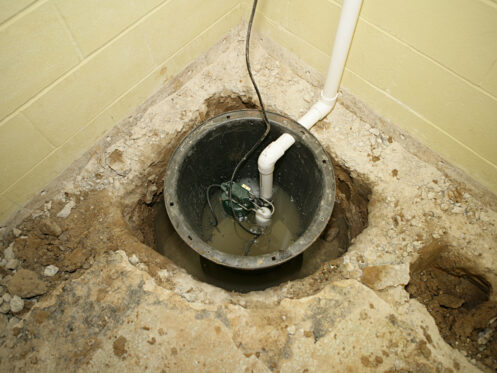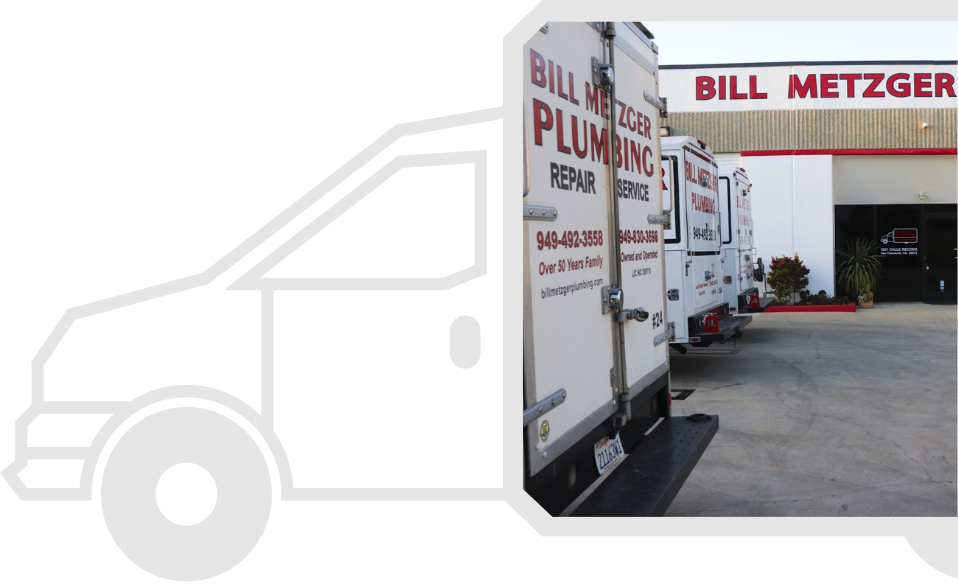Having a sump pump in your San Clemente, CA home will help you avoid flooding in low-lying areas. Often tucked away in dark, basement corners and cramped crawl spaces, these appliances are all too easy to overlook. However, when they’re properly installed and well-maintained, they’ll reliably kick into action whenever water enters the building. The following is everything you need to know about what your sump pump does and why it’s so essential.
Sump Pumps in San Clemente
San Clemente is known for its gorgeous beaches, sandstone bluffs, and amazing surf breaks. Located between San Diego and Los Angeles, the city is more likely to have warm, sunny days than flash floods and torrential rains. Still, San Clemente is estimated to have a greater than 26% chance of experiencing disruptive floods within the next three decades.
According to recent data, this means that homeowners with 30-year mortgages are 26% likely to experience either a shallow or deep flood event at least once during the lifetime of their loans. Moreover, climatologists within the region assert that a changing environment brings changing weather patterns, severe storms, and rising seas. Given that it’s nestled right along the coast, San Clemente is especially vulnerable to these factors.
All things considered, having a sump pump in the region is a good idea. It’s an excellent preventive measure against unexpected weather events, but it’s also key for avoiding water damage from risk factors that exist in any location:
- Water heater failure
- Improper application of wall and flooring sealant
- Cracked or clogged pipes
- Failure at water supply lines
- Whole-house backups
During times of moderate rain, these appliances are also handy for preventing water damage caused by clogged gutters and broken downspouts. Thus, although you might live in a region that’s largely sun, sand, and surf-worthy beaches, flooding in low-lying areas of your home remains a constant concern.
In the East and Midwest where homes are frequently built with basements, sump pumps are installed in these spaces at their lowest points. However, sump pumps in California are usually located in crawl spaces instead. This makes them more challenging to access and far easier to neglect.
If you recently purchased pre-existing construction that has a sump pump, it’s important to have this appliance professionally inspected, tuned up, and primed for action. After all, you never know when you might need it.
What Your Sump Pump Does and How It Works
When water enters basements or crawlspaces, sump pumps turn on, extract this water, and then pump it outdoors. Also known as sump pits or sump basins, sumps are holes in basement or crawl space floors in which some or all the sump pump units are installed. The flooring or grading around these pits naturally diverts water into them. Sump pumps start working as soon as the water levels within their basins rise too high. Extracted water travels through an attached drainage line known as an effluent, and it is then deposited in a designated drain or drainage area.
Pedestal Sump Pumps vs. Submersible Sump Pumps
For residential applications, there are two primary sump pump types: pedestal sump pumps and submersible sump pumps. Just as their name implies, submersible sump pumps are completely submerged in sump basins. This includes both the pumps themselves and their motors. They offer quiet operation and impressive power. Most submersible units also have relatively compact designs. These options fit into smaller spaces, leave more room for storage, and serve as far less of an eyesore in heavily frequented or multi-use areas.
Pedestal sump pumps have separate motors that are installed on pedestals just near sump pits. Compared to submersible designs, these pumps are easy to access for maintenance and repairs. They also have significantly longer lifespans. With diligent maintenance, pedestal sump pumps can last three decades or more. Given that the motors in submersible pumps are constantly underwater, they’re unlikely to last more than five to 10 years.
When it comes to performance, submersible sump pumps are easily the better option of the two. They work well in flood-prone regions and homes that routinely get large volumes of water in their low-lying areas due to grading issues or other factors. However, whether a submersible pump or pedestal pump is right for your home depends on a variety of building and household-specific factors. Noise tolerance and available space are among the top things to consider when making your selection.
Signs You Need a Sump Pump
The most common signs of the need for a sump pump are fairly obvious. For instance, you definitely need one of these appliances if your basement is currently flooded or has flooded before. In pre-existing construction, evidence of prior flooding to check for includes:
- A chalky, white coating on basement walls or flooring
- Pervasive problems with mold or mildew
- Peeling, blistered, or flaking paint
- Flooring that’s uneven or sinking
- Soft, warped, or buckled wood
You definitely want to have a sump pump installed if you recently finished your basement. If you have a downstairs area that’s used as a home theater, a gaming room, a home office, or a gym, a sump pump will protect all your furnishings, devices, and other valuables from moisture and mold-related damage.
Sometimes the need for a sump pump is far less obvious. This is frequently the case in houses that lack basements and require sump pumps for crawl space protection only. Constant concerns over indoor humidity may serve as a solid clue. The best level of humidity for your living space ranges between 30% and 60%. However, the ideal humidity levels for basement and crawl space areas are a bit more specific.
For basements, humidity should always fall between 30% and 50%. For crawl spaces, it’s best to maintain a static humidity of 55%. Anything significantly higher or lower can impact residents’ health, property values, and the integrity of both building materials and occupants’ belongings. If you’ve inspected all other possible causes for excess moisture in your living space, you might be surprised to discover that your crawl spaces are filled with water.
How Sump Pumps Limit Mold and Mildew Development
Another sign that you might need a sump pump is ongoing problems with mold and mildew. If you’ve scoured, disinfected, and deodorized your home to no avail, the underlying cause of these issues is either a slow and hidden leak or trapped moisture in your basement or crawl spaces. Whenever building materials are saturated by flood waters, homeowners have just 24 to 48 hours to take action before the first mold spores appear.
To determine whether you have problems with crawl space flooding or crawl space leaks, you can have these areas inspected by a licensed professional. You can also schedule humidity testing for both your general living space and these low-lying areas.
The Benefits of a Sump Pump
By preventing water from pooling in basements and crawl spaces, sump pumps protect building foundations. They limit the risk of mold and mildew development, preserve wood features and other building materials, and play a role in protecting your indoor air quality. They’re also a critical part of many pest management and pest treatment plans. After all, whenever there’s a viable point of entry and easy access to water, termites, rodents, ants, or cockroaches might make their way in.
We’re committed to helping homeowners in San Clemente, CA protect their properties. We offer sump pump installation, maintenance, and repairs. We also provide water treatment, drain cleaning, water heater, and general plumbing services.
To schedule an appointment, contact Bill Metzger Plumbing today!



 Today
Today 